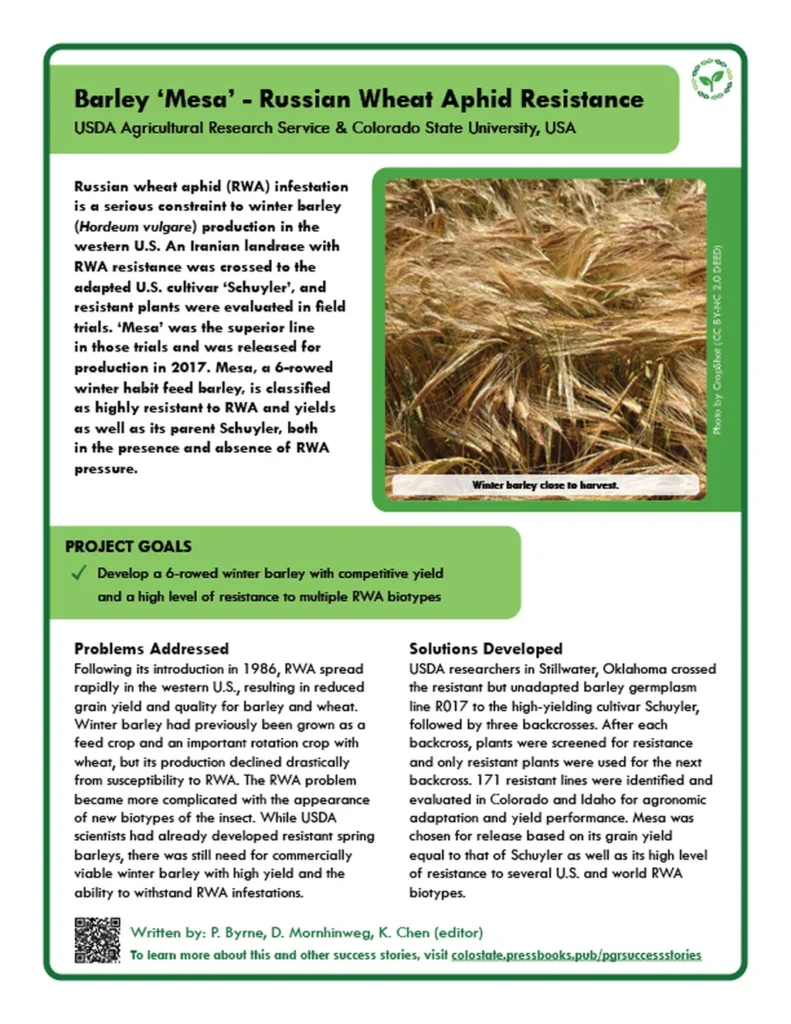In the ongoing battle against crop pests, a recent study published in *Open Agriculture* offers promising insights into the resistance of barley cultivars against the Russian wheat aphid (*Diuraphis noxia*). Led by Samara Rana from the Faculty of Agricultural Science and Technology at Palestine Technical University – Kadoorie, the research evaluated five barley cultivars using a combination of techniques, including electrical penetration graph (EPG), spectrophotometry, and quantitative real-time PCR. The findings could have significant implications for barley production and pest management strategies worldwide.
The Russian wheat aphid is a notorious pest known for causing substantial economic losses in barley and wheat crops. Its feeding habits not only damage plants directly but also facilitate the transmission of plant viruses, exacerbating the problem. The study aimed to identify barley cultivars that could resist aphid infestations, thereby reducing the need for chemical pesticides and improving crop yields.
Using EPG, the researchers monitored the feeding behavior of aphids on different barley cultivars. The results revealed that the cultivar ICARDA 15 exhibited strong resistance by preventing aphids from feeding and transmitting viruses. “This cultivar’s ability to deter aphids is a significant breakthrough,” said Rana. “It opens up new possibilities for developing aphid-resistant barley varieties that can thrive even in the presence of these pests.”
In addition to EPG, the study measured the activity of peroxidase (POX) and polyphenol oxidase (PPO) enzymes, which are known to play a crucial role in plant defense mechanisms. The cultivars Basil and Acsad 14/17 showed a significant increase in PPO and POX enzyme levels compared to the control, indicating their resistance to aphid attacks. “The elevated enzyme activity suggests that these cultivars have a robust defense system against aphids,” explained Rana. “This could be a valuable trait for breeders looking to develop more resilient barley varieties.”
The research also delved into the expression of defense-related genes using quantitative real-time PCR. The results showed that the cultivars Acsad 17/14, Arar, Ryhan, and ICARDA 15 exhibited increased gene expression compared to the local cultivar, further confirming their resistance to aphids. “Understanding the genetic basis of resistance is crucial for developing targeted breeding programs,” noted Rana. “This knowledge can help us create barley varieties that are not only resistant to aphids but also adaptable to various environmental conditions.”
The commercial implications of this research are substantial. By identifying and utilizing resistant barley cultivars, farmers can reduce their reliance on chemical pesticides, leading to lower production costs and a more sustainable agricultural system. Moreover, the development of aphid-resistant varieties can enhance crop yields and improve food security, particularly in regions where barley is a staple crop.
Looking ahead, this study paves the way for further research into the mechanisms of aphid resistance in barley. Future studies could explore the genetic and biochemical pathways involved in resistance, as well as the potential for developing transgenic barley varieties with enhanced pest resistance. Additionally, the findings could be applied to other cereal crops, potentially revolutionizing pest management strategies across the agricultural sector.
As the global population continues to grow, the demand for food will increase, making it more important than ever to develop sustainable and resilient crop varieties. The research led by Samara Rana offers a promising step in this direction, providing valuable insights into the resistance of barley cultivars against the Russian wheat aphid. With further exploration and application, these findings could shape the future of barley production and contribute to a more secure and sustainable food supply.

